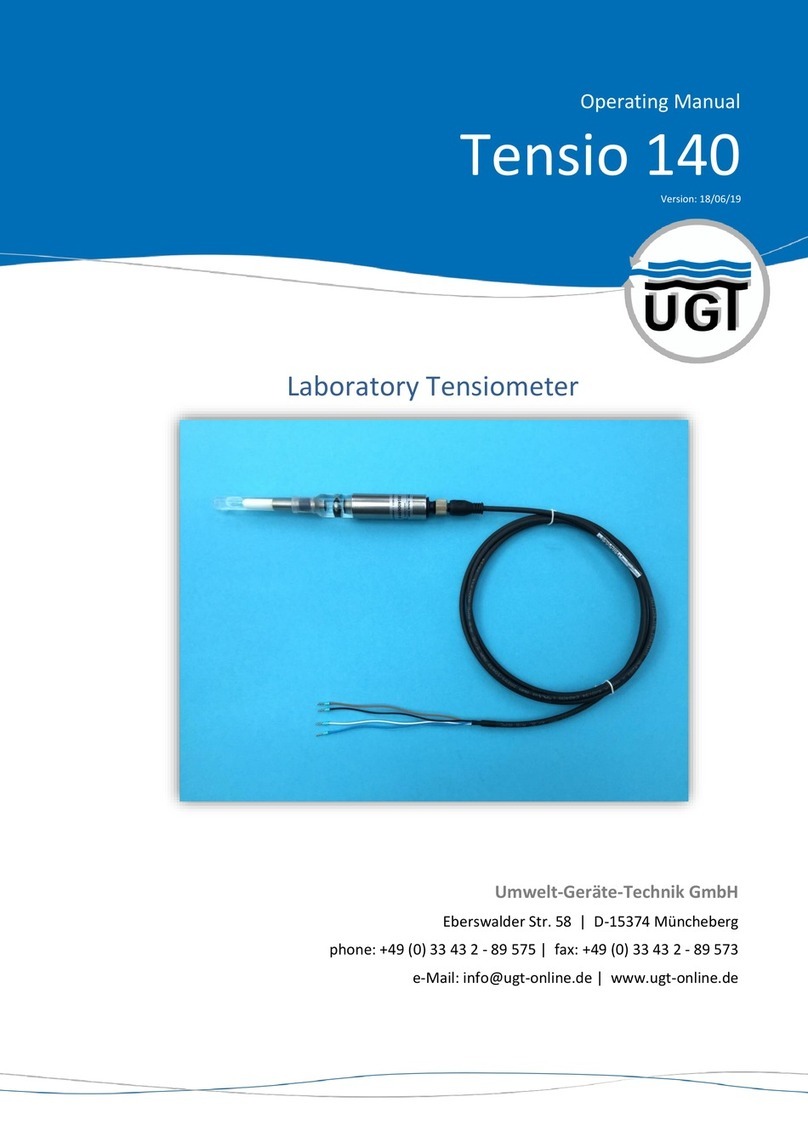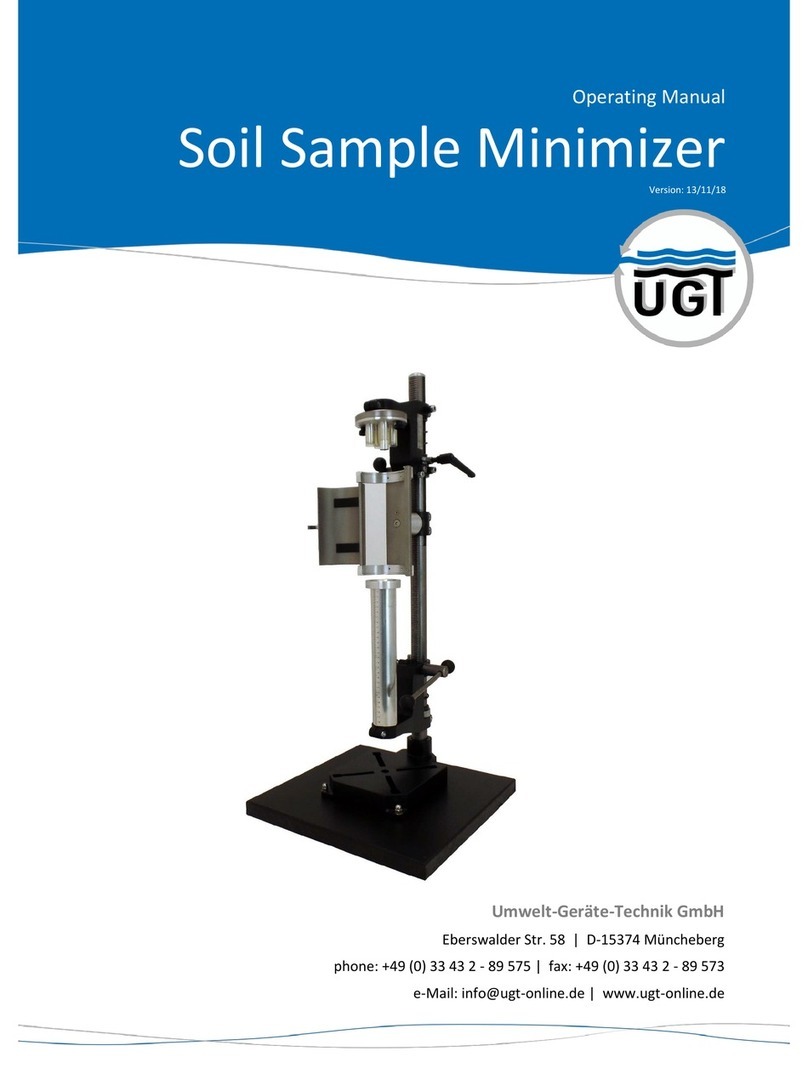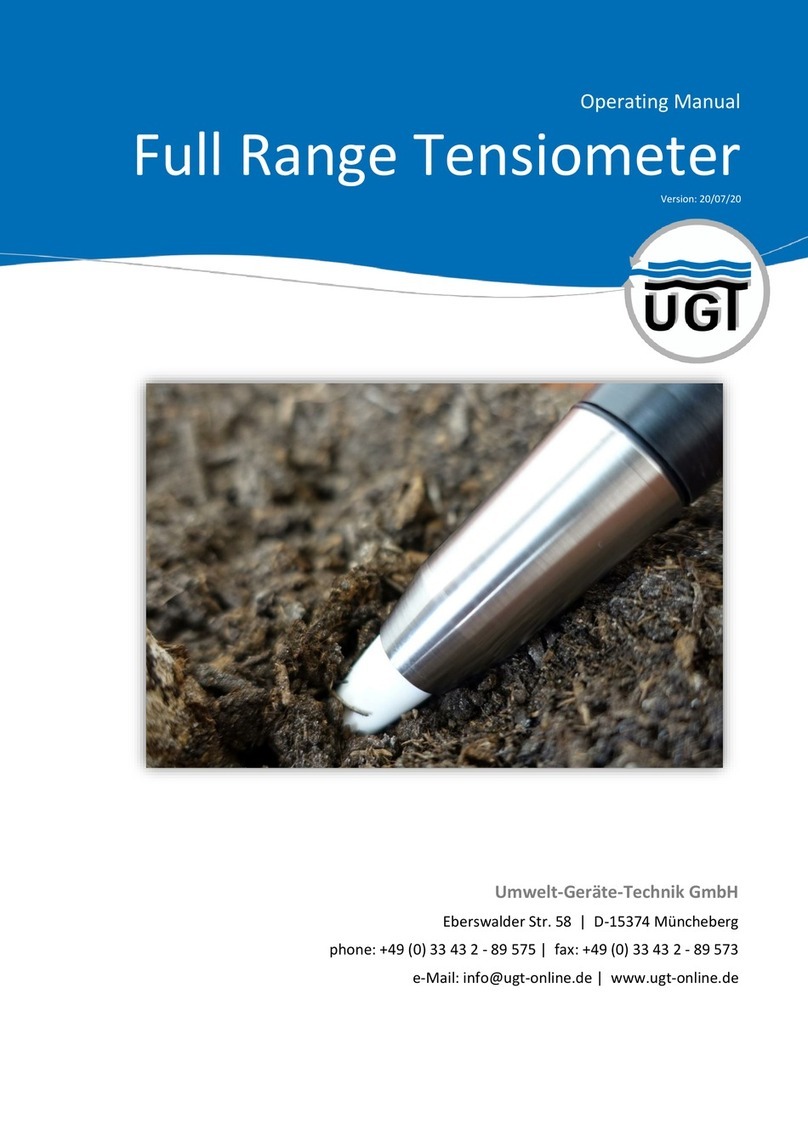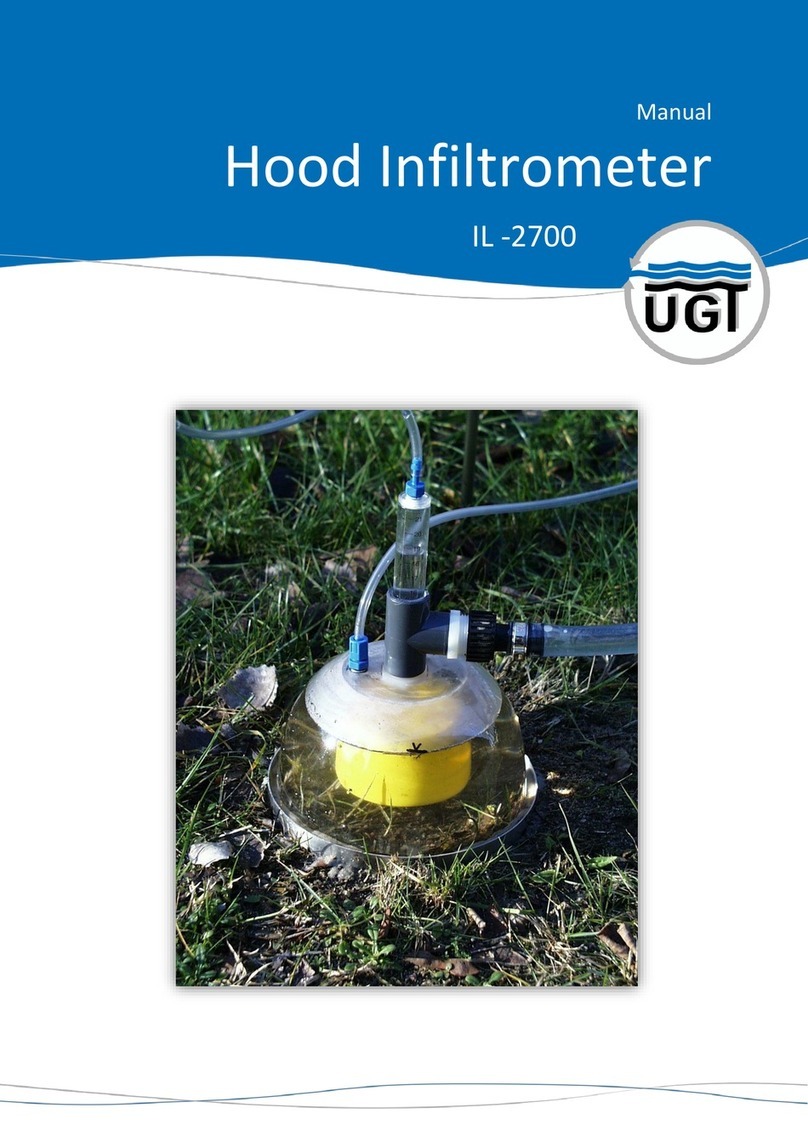Umwelt-Geräte-Technik GmbH | Eberswalder Str. 58 | D-15374 Müncheberg | phone: +49 (0) 33 43 2 - 89 575 | www.ugt-online.de Page 6 of 23
2.2. What Are Tensiometers Used For?
The tension corresponds to the force which a plant has to apply via the roots to extract water from the
soil pores. Among other applications, tensiometers can be used for irrigation control and for
evaluations of global warming impacts on ecosystems. The difference between the tensions at two
points within the soil acts as the driving force for soil water transport. Determining this gradient by
using tensiometers enables the evaluation of water movement in the soil regarding flow direction and
velocity. Tensiometer measurements are essential for the comprehensive analysis of the water balance
of a region or an ecosystem.
2.3. How Does a Tensiometer Work?
A Tensiometer consists of an air-tight sealed, water-filled measurement volume, a unit where the
pressure transducer is located, and a porous cup, usually made out of ceramic. The pores of the
ceramic cup are filled with water and connect the water of the measurement volume inside the
tensiometer with the water in the soil outside the tensiometer. By connecting the two water bodies
the pressure conditions inside the tensiometer are always adjusted to the pressure conditions of the
water in the surrounding soil. If the soil dries, water will flow through the pores of the porous
tensiometer cup from the measurement volume into the soil, thereby creating a negative pressure
inside the tensiometer.
The water flow equilibrating the pressures goes on until the negative pressure in the measurement
volume corresponds to the negative pressure in the surrounding soil. If the surrounding soil is wetted
again, for example by a precipitation event or irrigation, the negative pressure decreases in the
surrounding soil and water flows from the soil into the measurement volume, whereby the negative
pressure in the measurement volume is reduced again. A manometer or an electronic pressure
transducer measures the pressure inside the measurement volume. Depending on the tensiometer
type and design of the tensiometer the pressure is either read manually or captured automatically,
whereby the reading unit as well as the storage unit can be integrated in the tensiometer or externally
executed. Tensiometers are calibrated in a way that the measured pressure is zero when the porous
cup is right at the level of the groundwater surface. For the Tensio 100 tensiometers this calibration
only applies for vertical installation. The water-filled volume in the standpipe acts as a hanging water
column and applies an additional negative pressure on the pressure transducer. The tension value at
the ceramic tip and the pressure at the pressure transducer differ by this negative pressure. To
compensate the influence of the hanging water column, the pressure transducer is calibrated
accordingly. Since this pressure difference depends on the height difference between ceramic cup and
pressure transducer and therefore on the installation position, deviant installation angles result in
incorrect measurements.































